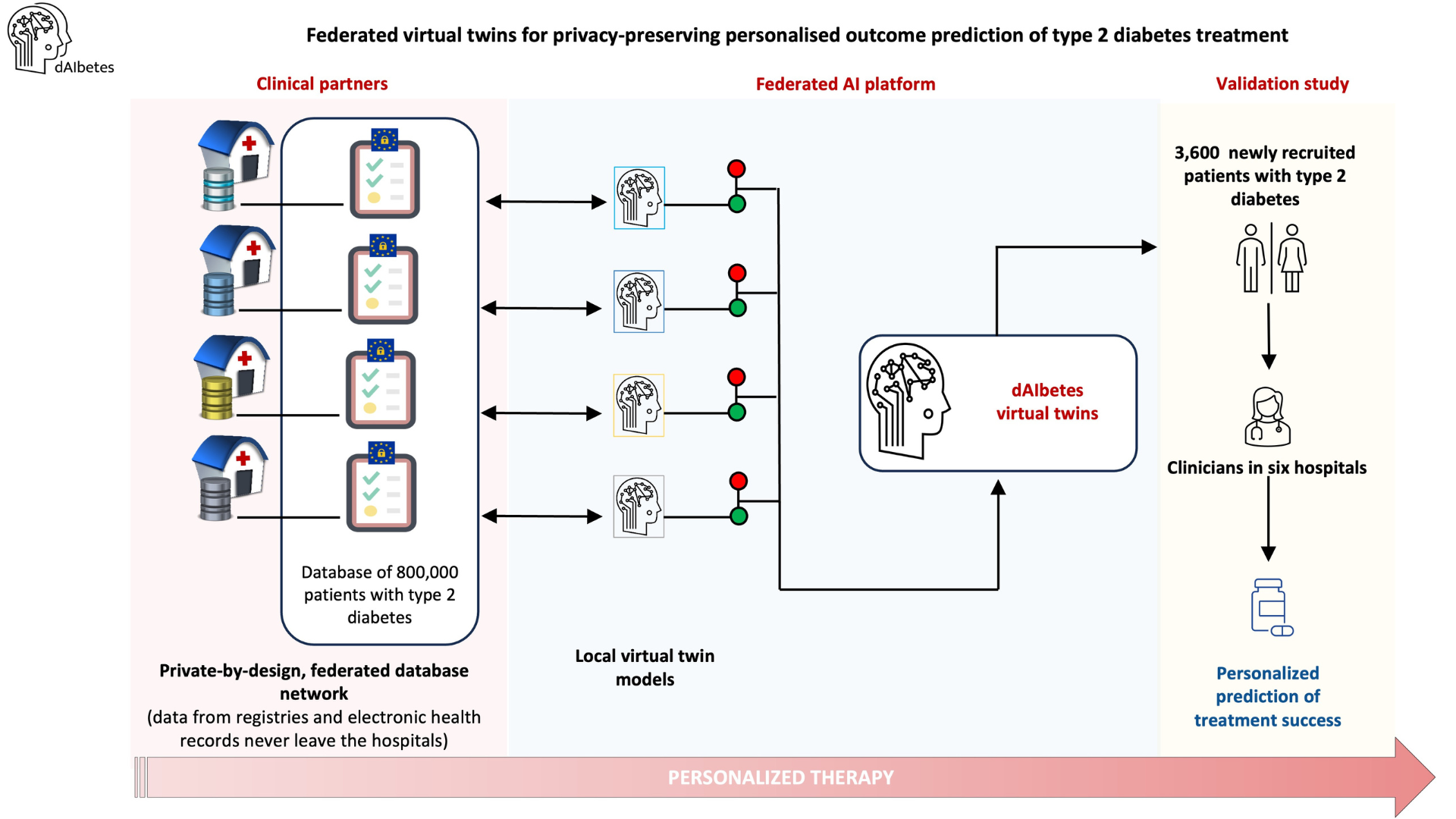Virtual twins to improve care for type 2 diabetes patients

The dAIbetes project will use data from around 800,000 European patients to train AI models. The data comes from patients with type 2 diabetes, a disease that affects one in ten adults globally. Patient data will not leave the involved hospitals or universities in Europe and the United States. Only the local models built from patient data will be shared to create a common AI model through federated data analysis.
Researchers will train AI models to later create virtual twins of patients. Hospitals can use these twins to simulate how patients might respond to different treatments.
"With virtual twins, we can tailor the treatment of type 2 diabetes for each patient," says Paolo Parini, a Senior Consultant at Karolinska University Hospital and leader of the Swedish Clinical Research Team in the project.
In the first two years of the project, researchers will develop the technical infrastructure for federated data analysis and create the virtual twin software.
"We expect to start testing and validating the virtual twin on patients in 2026," says Parini.

In Stockholm, up to 600 patients with type 2 diabetes are planned to receive care with the help of a virtual twin.
The project is funded by the European Union, with a total budget of about SEK 100 million. Just over seven million goes to Sweden, where Södersjukhuset and Södertälje Hospital, represented by Tomas Nyström and Camilla Krizhanovskii, also participate.
"We look forward to seeing how the virtual twin can improve care and quality of life for patients with type 2 diabetes," says Parini.
The dAIbetes project will run until the end of 2028.
___________________
Text: Anton Andersson.